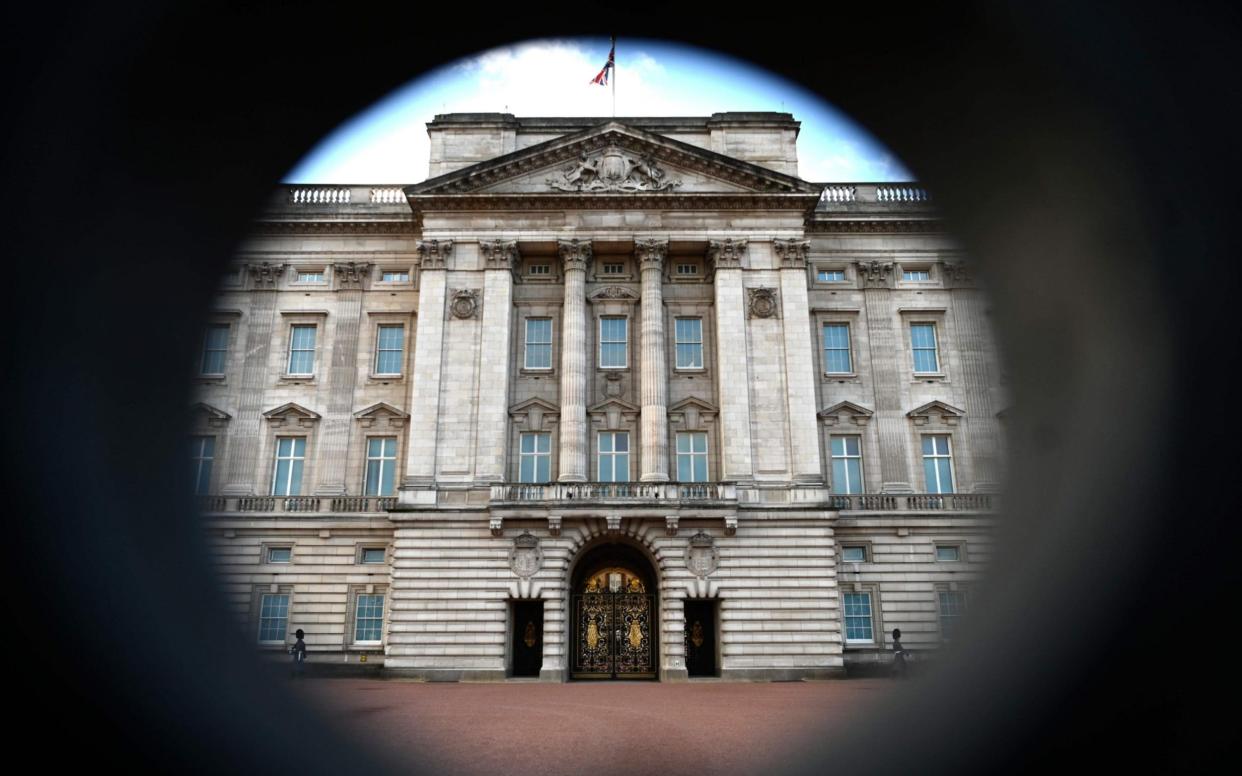Royal blueprint: How the split between Prince Harry and Meghan and the family might be resolved

The Queen has demanded that negotiations on the royal future of the Duke and Duchess of Sussex should provide a blueprint for generations to come.
With teams on all sides locked in talks to find “workable solutions” to the couple’s quest to become “financially independent” while continuing to “fully support Her Majesty”, by Buckingham Palace’s own admission there are “complicated issues” to resolve. The 93-year-old monarch has set a deadline of one week for them to achieve it.
With Palace insiders concerned that allowing the Duke and Duchess to have their royal cake and eat it might set a dangerous precedent, we examine what the “new progressive role” they are seeking within the institution might look like.
Funding
The Sussexes complain on their website they are “prohibited from earning any income”. Under their plan, they “prefer to release [their] financial tie” to the Queen’s Sovereign Grant. They say the grant contributes five per cent of the cost of their office, with 95 per cent of their income from the Prince of Wales via his Duchy of Cornwall estate.
An examination of royal accounts suggests that the Duke of Sussex receives in the region of £2.3 million a year from his father’s estate.
Solution: Sir Michael Stevens, the current Keeper of the Privy Purse and Treasurer to the Queen, is understood to be helping with a new funding solution that would see the Sussexes produce “a new costed scheme” for their “transition” with a possible view to reducing their Duchy funding. Princesses Beatrice and Eugenie are examples of family members who both hold HRH titles and live in royal residences while holding down full-time jobs. Neither have taxpayer-funded bodyguards.
Security
The Sussexes say that taxpayer-funded, armed security is “mandated by the Home Office”. Their Metropolitan Police protection officers are thought to cost upwards of £650,000 a year and senior government sources have said their future security “will be discussed”. But it is not just the cost of the couple’s personal bodyguards that needs to be considered. It has not yet been decided who will foot the bill for any overseas public appearances.
Solution: The Duke of York was forced to pay for private bodyguards for his daughters, while Diana, Princess of Wales, dispensed with her protection officers before she lost her HRH status. But the fact that the threat level against Prince Harry as a former Army captain who served two tours of Afghanistan is much higher will mean a compromise will have to be found.
Could the number of protection officers from the Metropolitan Police force be reduced and topped up with bodyguards from the kind of private security firms that are hired to look after celebrities and other high net worth individuals?
Frogmore Cottage
On their website, the Duke and Duchess say they will continue to use Frogmore Cottage as their official residence so that their family will always have a place to call their home in the United Kingdom. Renovations to the cottage in Windsor cost £2.4 million, ultimately paid for by the British taxpayer.
Solution: Amid controversy over paying a “nominal fee” to live in a five-bedroom, five-reception room apartment at Kensington Palace, the Queen’s cousin Prince Michael of Kent and his wife Marie Christine were forced to pay an annual rent of £120,000 in 2010.

The Duke of York agreed a 75-year lease on 30-room royal lodge in Windsor, for which he paid £1 million in 2003. Like Frogmore Cottage, both are owned by the Crown Estate, so the Sussexes could negotiate similar leasing arrangements for their British base.
Titles and succession
The Duke and Duchess want to continue to use HRH titles but they face being criticised for “cashing in” on their royal status if they are seen to be flouting their connections to the Crown to make money in North America. Harry is currently sixth in the line of succession.
Solution: Both Diana, Princess of Wales, and Sarah, Duchess of York, lost their HRH titles when they divorced and stepped down from royal duties, so it is possible the couple could lose their letters while retaining the Duke and Duchess of Sussex titles, which were a wedding gift from the Queen. Allowing them to keep part of their police security detail could sweeten the blow.
Or rather than being stripped of their HRHs, an agreement could be reached whereby the couple could simply agree not to use the acronym, which does not mean much in North America, and leave them freer to pursue lucrative commercial opportunities.
Despite being the grandson of King George V, Prince Michael of Kent relinquished his place in the line of succession to marry a Catholic under the Act of Settlement in 1701 (although later rejoined when the Act was overturned).
It would require a Letters Patent to be issued by the Queen.
Living abroad
The Duke and Duchess have been vague about their future home, only saying they will “balance our time between the United Kingdom and North America”.
They had spent the past seven weeks in Canada, staying part of the time in a mansion in Vancouver. It is now being suggested that they will divide their time between southern California, where Doria Ragland, the Duchess’s mother, lives, and Canada, possibly Toronto where the Duchess had a home when she was starring in the television drama series Suits.
Solution: There is nothing to stop the couple purchasing private property abroad. The Duke of York and his former wife own a chalet in the Swiss Ski resort of Klosters, while the Earl of Snowdon, Princess Margaret’s son, owns a second home in the south of France.

